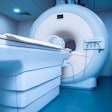
In the busy day to day of radiology practice, it can be difficult to keep track of key details such as exam coding. Attendees received some tips in an August 1 session at the AHRA conference in Nashville, TN.
 Melody Mulaik.
Melody Mulaik.Mastering coding and compliance issues is crucial to a successful practice, said presenter Melody Mulaik, president of Revenue Cycle Coding Strategies in Cedar Park, TX.
"Radiology managers and administrators must be able to effectively manage or oversee coding and compliance for their departments and organizations to make sure revenue isn't inappropriately gained or forfeited," she said.
In her talk, Mulaik outlined a variety of coding and compliance concerns -- from how to deal with orders and how to bill to prior authorizations and supervision requirements.
Optimizing ordering
Radiology managers should keep the following in mind when it comes to dealing with orders for imaging:
- Most payers require prior authorization for CT, MRI, and PET exams; obtaining this is the referring physician's responsibility.
- The imaging provider can't unilaterally change an order. Individual payer guidelines must be followed, which usually requires a new/revised prior authorization to be paid for the service.
- Hospital orders are subject to the Medicare Conditions of Participation for Hospitals. In a nonhospital setting, all diagnostic tests must be ordered by a physician or a nonphysician practitioner who is treating the patient.
- Required elements in an order include the specific test request, the test's clinical indications (it's not appropriate to only provide ICD-10-CM codes, Mulaik said), and the referring provider's name and signature.
What if additional testing is needed? According to the U.S. Centers for Medicare and Medicaid Services (CMS), additional tests can be performed at the testing location without a new order -- for example, when a bone scan shows a lesion on the femur that requires plain x-ray for diagnosis -- if the following conditions are met, according to Mulaik:
- The ordered exam has been performed.
- The results of the ordered test are abnormal and an additional test is medically necessary.
- A delay in testing would have a negative impact on the patient.
If an imaging order doesn't specify test parameters such as number of views or the use of contrast, the radiologist can determine them, but if the request specifies a particular test design, the radiologist can't choose a different one without an amended order. As for obvious errors in the order, imaging staff can correct them, according to Mulaik.
"The testing facility may correct errors in the order that would be obvious even to a layperson, such as orthopedics orders an x-ray of the patient's right ankle but the injury is on the left," she said.
Successful supervision
Complying with supervision requirements correctly can seem daunting, but it's nonnegotiable, she cautioned.
"Compliance with supervision rules is not optional," she said.
There are three levels of imaging exam supervision:
- General: The exam is under a physician's overall direction, but his or her presence is not required.
- Direct: The physician must be in the office and available to assist. This may be accomplished virtually in real-time through the 2021 calendar year due to the COVID public health emergency, Mulaik said.
- Personal: The physician must be in the room during the procedure. Availability by phone or being present somewhere in the building does not apply.
Practices must keep considerations such as where the service was performed, who provided the supervision and the service, and what was performed in mind, she noted.
Modality mash-up?
Coding considerations can vary by modality, so it's important to be aware of different modalities' documentation requirements, according to Mulaik. In general, diagnostic imaging studies must specify the number and types of views and whether the exam is unilateral or bilateral. Breast imaging studies must specify whether they are screening or diagnostic and whether ultrasound or postprocedure mammography is needed.
Ultrasound exam orders need to state whether it is a complete or limited exam and include sufficient documentation to meet the exam requirements; vascular ultrasound studies also have very specific requirements that must be met, she said. And CT/CTA exams, MRI/MRA exams, nuclear medicine studies, and interventional exams all have their requirements as well, Mulaik said.
Don't underestimate
Keeping up with best coding practices is part of running a successful imaging department, Mulaik concluded.
"Coding and compliance rules are complex -- don't underestimate them," she said.



















